London is getting taller. The city’s skyline is changing as an explosion of skyscrapers grows upwards across the capital.
I’ve noticed a dramatic change during my recent visits to London. And these skyscrapers are becoming big tourism attractions in their own right.
The Shard, London’s tallest tower, attracted 1 million visitors over the last 12 months. So what’s driving our obsession with tall buildings?
More than 230 towers over 20 storeys are planned to meet London’s population boom over the next few years with a dramatic impact of the city’s future skyline.
Growing up
It’s estimated that over 10 million people will be living in London by 2030. But this growing population will create challenges for the city. Increasingly, London is going to have to build upwards.
The big building boom is already underway and it’s changing the way London looks and feels from street level and from up in the air.
This changing skyline is the subject of a new exhibition called London’s Growing Up! The Rise and Rise of London’s Tall Buildings at London’s Building Design Centre.
I went along to see how London is growing up and what it means for the city’s future skyline.
Reach for the skies
Welcome to London’s skyline, a world where skyscrapers have evocative names like ‘The Cheesegrater’, ‘The Atlas’. ‘The Quill’ and ‘The Blades’.
The Gherkin, Canary Wharf and The Shard were the trailblazers in the early Millennium.
The Shard is perhaps the most striking of London’s tall buildings at an impressive 800 feet high. It’s also the tallest building in Western Europe – for now.
With its sleek design by architect Renzo Piano, it offers spectacular views over London for up to 40 miles from the dizzily high 72nd floor.
The Shard is almost twice as high as any other vantage point in the city, and claims to be the only place where visitors can see the entire city of London at once.
It has a definite ‘wow’ factor. I remember seeing it close up for the first time and gasping open-mouthed. This is one big, towering building.
Its crystalline tower with public viewing platform looks like something out of a Disneyland fantasy world.
It’s well worth a visit to see the panoramic view despite the sky-high admission prices.
After a trip to The Shard (near London Bridge Station), my recommendation is to take a tour along the Thames to see London’s changing skyline for yourself. Start with a boat trip from Waterloo or Millbank (Tate Britain) down to either Bankside (Tate Modern) or further down to Greenwich.
From the Thames you’ll get a great view of the tall buildings that are springing up around the riverfront. Get off the river boat at Bankside and take the lift to the top of the Oxo Tower where you’ll get another aerial view.
Then walk over the Millennium foot bridge to the City of London, a magnet for new skyscrapers, including the Leadenhall Building.
You’ll also spot 20 Fenchurch Street – which my partner Tony has nicknamed ‘The Shampoo Bottle’ because of its flared shape.
This new tower boasts an uninterrupted view in every direction but I’m really not sure that I like its chunky design. Make your own mind up as this 37 floor monster rises above its smaller neighbours.
Afterwards, take a Tube from Bank in the City to the London’s Growing Up! exhibition off Tottenham Court Road where you’ll see a fascinating model of the future London skyline.
Architectural wonders?
It’s intriguing to discover that The Shard has many more younger big brothers marching their way across London.
The daddy of them is The Pinnacle which towers over other developments at 64 floors high. With its swirly shaped top, this sleek building looks like a giant fountain pen. It’s due to be finished in 2017.
Still on the drawing board, The Blades in Elephant and Castle is also likely to rival The Shard with its twin, wafer thin towers.
The towers are designed to cut through the blustery winds on a notoriously windswept site. The idea is that people walking in the large public piazza below don’t get blown away!
Another blockbuster is the Leadenhall Building, the younger sibling of The Shard with a sloping facade. This has been nicknamed ‘The Cheesegrater’.
Inside there’s the usual mix of offices, shops and flats but the unique selling point (in marketing parlance) is its dramatic seven storey high landscaped galleria.
This architectural wonder is located right in the heart of the city of London so you won’t miss it if you take the walk I described above.
At 52 stories high, this distinctive tower looks set to make a big impact on London’s skyline, not least because it dwarfs its historic neighbours.
Nearby St Paul’s Cathedral looks like a miniature Lego building a few hundred metres down the road. And I’m not sure this is a good thing.
To be fair, the ‘Cheesegrater”s design is classier than most new buildings.
But I have my doubts when I look down the Thames and see how it is changing the landscape of the City of London.
St Paul’s is protected by something known as ‘St Paul’s Heights’, a policy which limits the size of buildings in its sight lines. But these new towers look perilously close to the edge of this protected envelope.
On the opposite side of the Thames, I’m concerned about the tall building which is going up close to one of my favourite London landmarks, the OXO Tower.
The OXO Tower is relatively petite, having been built at a time when building upwards was more controversial than now. Its Art Deco style fits well with the scale and urban rythym of the riverside.
But it’s getting harder to see the OXO building properly now that a large tower block is rising up over the road behind it.
Shape of things to come
‘Stylish’ and ‘sexy’ are the two words that leap out when architects and developers talk about London’s new skyscrapers.
One of the class acts they refer to is The Quill, a redeveloped 1960s tower in Southwark, which looks like a building topped off with a giant pen nib.
Located near London Bridge, this flashy building boasts a 31 storey tower with a steeply sloping roof. It’s rather good.
The list of concrete and glass giants is endless with the greatest concentration of towers springing up in the Isle of the Dogs, the City of London, Tower Hamlets and Vauxhall.
Down at the Isle of Dogs, those of you who like their buildings rounded should check out One Wood Wharf (shame about the dull name). Cylindrical in shape, this tower looks like a giant periscope.
It’s a big statement building, a sign of the times.
Perhaps it’s a symbol of London’s optimism and energy that so many of these buildings have been mushrooming.
But I can’t help thinking that this new vertical urban jungle is built on rampant capitalism rather than any sense of community. Whilst passing another homeless guy sleeping rough next to The Shard, I’m tempted to be cynical about these sexy, shiny towers.
Who owns or indeed lives in all these towers? Rich Russian oligarchs? Arabian millionaires? Chinese investors? London’s super-rich?
Go take a look for yourself, marvel at the towers and ask yourself what this is all about. Are they vanity projects? Money-making machines? And how green and sustainable are they?
As visitors to London should we care? I think we should because these skyscrapers are changing the look of the capital. Beautifully designed towers can enhance London’s skyline. Bad buildings can become carbuncles on the skyline for decades to come.
So are we doing enough to protect sensitive historic areas for the future?
It’s interesting that the New London Architecture think-tank has called on Mayor Boris Johnson to create a Skyline Commission to control the quality of new buildings in the capital.
Boris has always sat on the fence about London’s tall buildings compared with his predecessor Ken Livingstone who was a big ‘tower man’. Ken was keen on skyscrapers which he saw as glamorous billboards ‘advertising’ London as a World City.
With the boom in skyscrapers is London in danger of becoming like Shanghai or Dubai where there’s a big building free-for-all? Or is the race to the skies good for business, Londoners and tourists?
After all, Bilbao in northern Spain has developed huge kudos and a boom in tourism following its promotion of architectural towers and iconic buildings.
Rise of the titans
The rise of the titans has become almost an unstoppable force but some of these skyscrapers have tried to go ‘green’ in response to their critics.
My personal favourite is ‘Canaletto’ in Islington which comprises the eponymous luxury apartments, penthouse suite and recreation facilities.
The architects have gone all eco-friendly and have built over-flowing gardens that look like the Gardens of Babylon on each level.
The Stage in Shoreditch, with its museum, offices and exhibition spaces, will include an energy centre designed to reduce CO2 emissions.
The Heron Tower near Liverpool Street Station, an office building in the financial heart of the city, has gone one step further with Britain’s largest privately owned aquarium.
One big criticism is that a lot of these tall buildings don’t encourage public access. They’re private spaces.
So the Bishopgate tower in the City of London will feature an area of public space where lesser mortals like you and I can wander freely.
Since skyscrapers pierced London’s skies for the first time in the 1960s, London’s skyline has changed dramatically.
During the 1960s controversy raged in the battle between conservationists and modernists.
Today, London’s skyline is changing at perhaps the fastest pace ever.
With London facing a housing crisis and keen to grow economically, the temptation to build upwards is at an all-time high.
Londoners might like looking at high quality skyscrapers but recent surveys have shown that they are less keen on living in them.
Their favourite modern building is one of mine – The Gherkin, Norman Foster’s sculpted tower with a bulbous frame.
Originally dubbed ‘the Erotic Gherkin’, it opened the floodgates for more tall towers.
It reminds me of an old-fashioned rocket, the sort featured in Hergé’s Tintin cartoons.
It feels less aggressive and softer in style than other modern towers.
No surprise that Londoner’s least favourite tower was the concrete jungle of The Barbican, a dour development built in the 1970s and early 1980s.
I try to avoid it unless I’m going to a theatre or music event. It’s an example of how tall buildings and bad design can make a visitor feel alienated and overwhelmed.
City challenge
The tall building debate isn’t just peculiar to London. Other cities also face the challenge of whether to build sky-high or keep their skylines lower.
Paris has a blanket ban on super-tall towers in its historic centre and no building can be more than 83 feet high. So the Eiffel Tower is unlikely to face competition from a skyscraper like The Shard.
Instead, it has concentrated its tall towers at La Defense on the edge of the French capital.
The Hermitage Plaza towers in La Defense, designed by Norman Foster, could soon become Europe’s tallest buildings with 92-94 floors, knocking The Shard off its top spot.
Vancouver in Canada has opted for mid-rise developments and lots of green parks to keep its maritime character and preserve its historic centre.
Of course, New York has continued to be a leader in skyscrapers with some of the world’s most beautiful high-rise buildings.
But even here, the city has strict zoning designed to control where tall buildings can be built.
The Chrysler Building is still one of my all-time favourites.
Once the tallest building in the world, it was built in 1928 in glittering Art Deco style. It remains a classic design and a truly thrilling skyscraper.
Hong Kong and Shanghai have taken over New York’s crown as skyscraper capitals of the world with high-rise being the norm to cater for their huge populations.
With at least 236 towers above 20 storeys currently planned for London, the skyscraper is in the ascendancy.
Construction on London Bankside’s 50-storey One Blackfriars – dubbed the “Boomerang” – has begun whilst plans for a 60-storey residential skyscraper in Nine Elms and further towers in Elephant & Castle and Waterloo have also been approved.
So what are your favourite London buildings and how do you feel about the capital’s towering skyline?
And what are your thoughts about what one architect has called “a veritable tsunami of towers”.
For me, I like the high quality towers but fail to see the merit in the mundane ones. Good design is the key to London having a world-class, vibrant skyline.
We must learn from the lessons of the 1960 when tall buildings took over but not all were brilliant designs.
Let’s hope that London’s new skyline is truly exciting and something that we can be proud of for future generations to come.
Tammy’s top London travel tips
London’s Growing Up was at London’s Centre for the Built Environment at 26 Store Street off Tottenham Court Road but closed on Thursday 12 June 2014.
The best places to get an aerial view of London are The Shard, Heron Tower and The Gherkin.
The Shard’s viewing platform is open Sunday to Wednesday 10-19:00 (last entry 17:30) and Thursday to Saturday 10-22:00 (last entry 20:30).
All tickets are dated and timed for your arrival, but there are no time restrictions on your stay. But the tickets are a pricey £24.95 per adult.
Visitors take the high-speed ‘kaleidoscopic’ lifts to ascend to the first triple-height viewing platform on Level 69.
State-of-the-art interactive touchscreen telescopes enable The Shard’s guests to explore the views.
You can then ascend to Level 72, the open-air viewing gallery, where guests can gaze up to the top of the building as the shards of glass that form the spire reach up into the sky.
The entrance to The Shard is on Joiner Street which leads to London Bridge Underground Station (Northern and Jubilee line services), London Bridge Main Line Station (Via The Vaults), Tooley Street and St. Thomas Street.
Plan your visit to us with TfL’s journey planner.
The Heron Tower has two restaurants on its upper floors. Sushi Samba (Japanese/Brazilian/Peruvian cuisine) is located on the 38th and 39th storeys.
The Duck And Waffle is a good viewpoint on the 40th floor if you have a head for heights.
The Gherkin is London’s 6th tallest building and features a top floor restaurant called Searcys. The building is located at 30 St Mary Axe.
It’s home to London’s highest private members’ club, featuring an exclusive lounge, restaurant and bar with 360° views over the City.
There are lower level views from the Oxo Tower’s 8th floor deck.
Take a lift to the restaurant where there’s a narrow walkway where you can look out over the South Bank.
Check out the league table of tall buildings in London on Wikipedia.
Photo Credits – Future London images are courtesy of Hayes Davidson and the London Building Design Centre. Current London photos are by Tammy Tour Guide.
Read about New York’s changing skyline in a blog about architecture and the Big Apple


















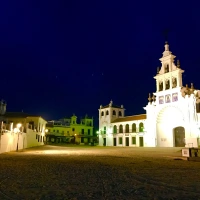



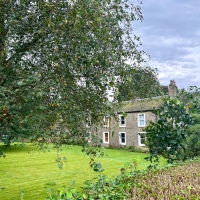

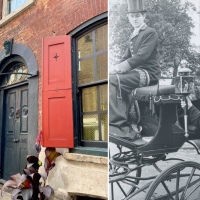
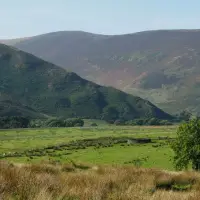



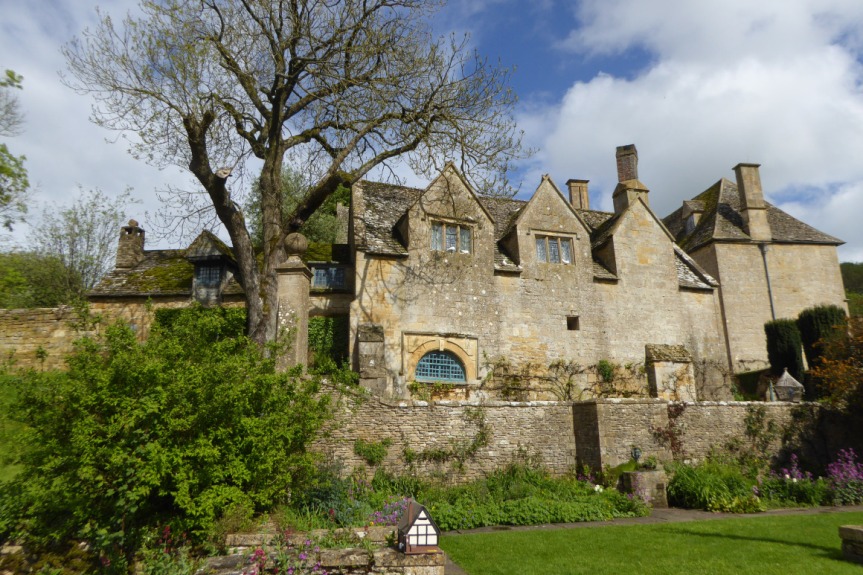



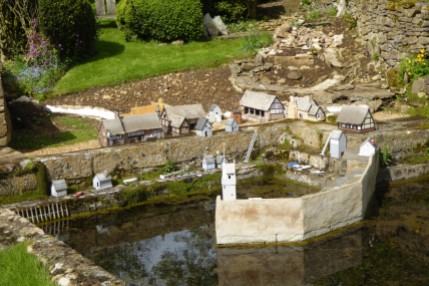



Hey Tammy,
Could I use your first picture, in this article, for private use, and maybe later for online use? It’s a real nice one, it’s even nicer after I edited it (I want to use the edited one).
Thanks in advance for your reaction,
Wouter Dijkstra
That would be great – no problem. Even better if you can credit Tammy Tour Guide Word Press somewhere. Pleased you liked it.
Just realised that the top image is actually courtesy of Hayes Davidson and the London Building Design Centre. You might want to contact them if you’re using it in any published material – just in case. Some of the other photos are theirs and others are mine.
Thanks for your awesome response (& photo :))
Greetings
a nice collection of the various shapes in london!